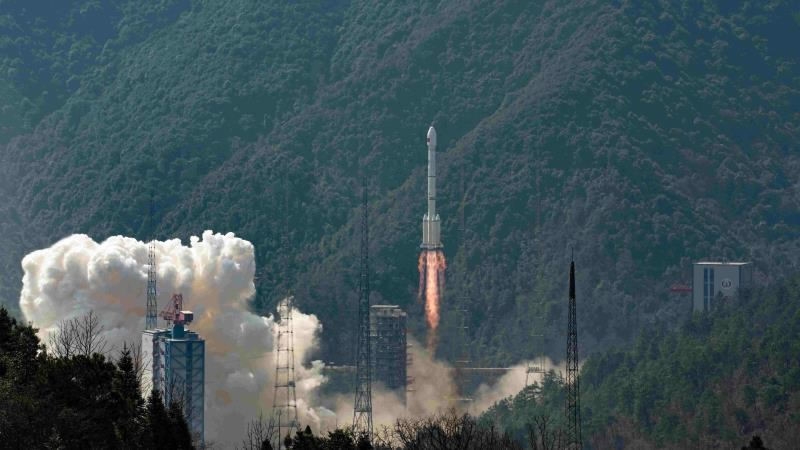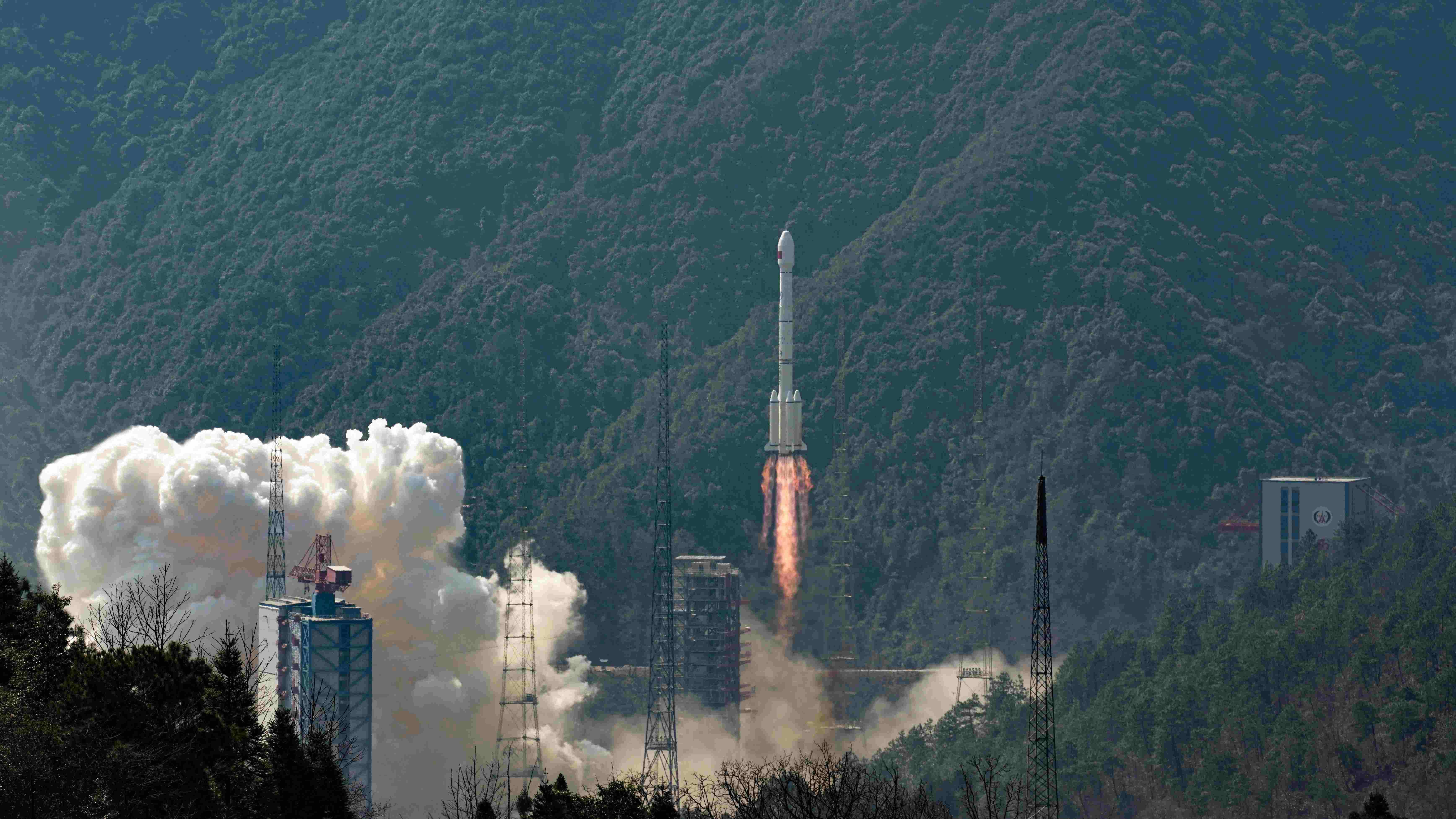
Tech & Sci
19:07, 12-Feb-2018
Twin satellites launched to develop China’s BeiDou system
CGTN

China successfully sent twin satellites into space on a single carrier rocket on Monday, marking the third launch of the country's BeiDou-3 Navigation Satellite System.
The 5th and 6th satellites of the BeiDou-3 network project – also the 28th and 29th orbiters for China’s BeiDou Navigation Satellite System – blasted off on a Long March-3B carrier rocket from Xichang Satellite Launch Center in southwest China’s Sichuan Province.
After more than three hours of flying, the pair successfully entered its designated orbit – over 20,000 kilometers above the Earth – each carrying a rubidium atomic clock that can highly improve the system's positioning accuracy.

Compared with its previous generation – BeiDou-2 – BeiDou 3’s satellites are equipped with rubidium atomic timekeepers that are smaller, lighter and more advanced. Important payloads of the navigation satellites, atomic clocks are the workhorses which synchronize the signals that allow satnav receivers to triangulate their position on Earth.
"The stability of the new-generation clocks has been improved by 10 times, compared with those carried by BeiDou-2 satellites," said Qu Yongsheng from the China Aerospace Science and Technology Corporation fifth research institute, Xi'an branch, developer of the clocks.
The satellites are actually loaded in the Long March rocket’s upper stage, which serves as a space shuttle bus that can take the satellites to the intended orbit without consuming the satellites' own energy.
Now some new technologies have been developed to the upper stage to ensure a much safer trip.

CGTN Infographic
CGTN Infographic
“We have been using the upper stage for six BeiDou launch missions, and have developed some new technologies. For example, if the carrier rocket sends the upper stage to an orbit lower or higher than the intended orbit, a redundancy system will help bring the 'shuttle bus' back on track before releasing the satellites,” said Hao Jun, upper stage commander at the launch center.
Chinese President Xi Jinping visited the launch site Saturday ahead of the launch of the BeiDou-3 satellites.
Xi, also general secretary of the Communist Party of China Central Committee and chairman of the Central Military Commission, inspected the preparation work for the launch while visiting the site's command center.
He talked with the scientists and technicians, asking them about their research, work and lives. And he also told them to keep pursuing precision and perfection to ensure the success of the launch.
Named after the seven bright guiding stars, the BeiDou Navigation Satellite System has been providing navigation services in the Asia-Pacific region since 2012. The BeiDou-3 project is scheduled to cover countries and regions along the Belt and Road by 2018, and a complete 35-satellite network allowing for global coverage will be in place by 2020.
1866km

SITEMAP
Copyright © 2018 CGTN. Beijing ICP prepared NO.16065310-3
Copyright © 2018 CGTN. Beijing ICP prepared NO.16065310-3